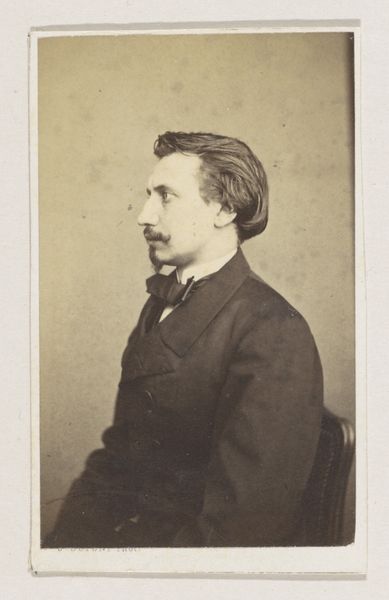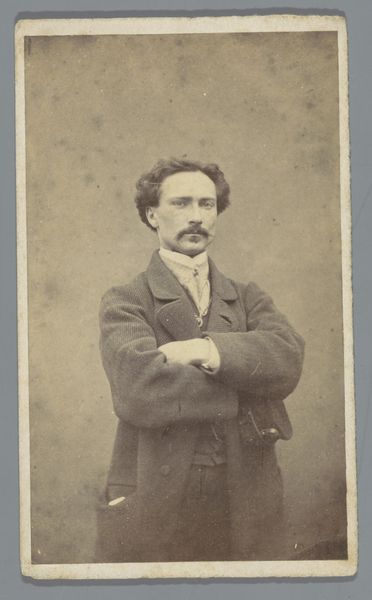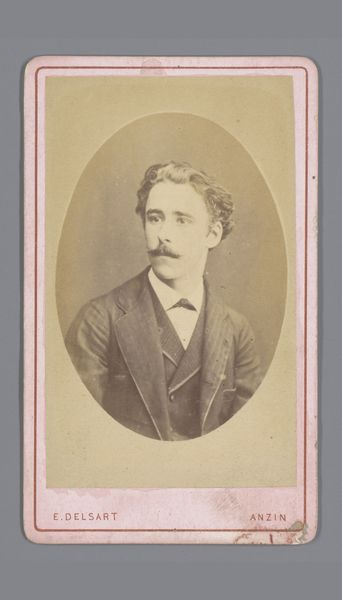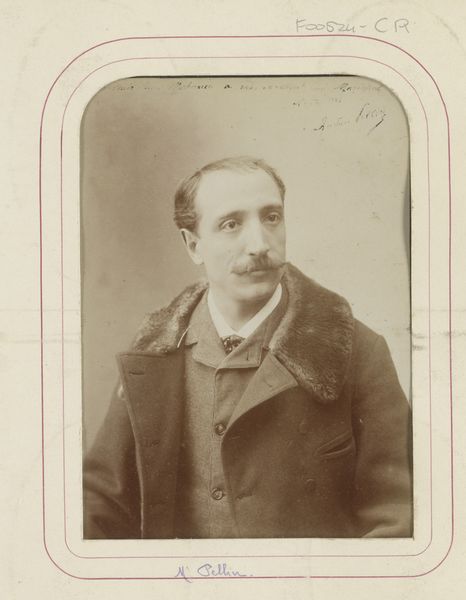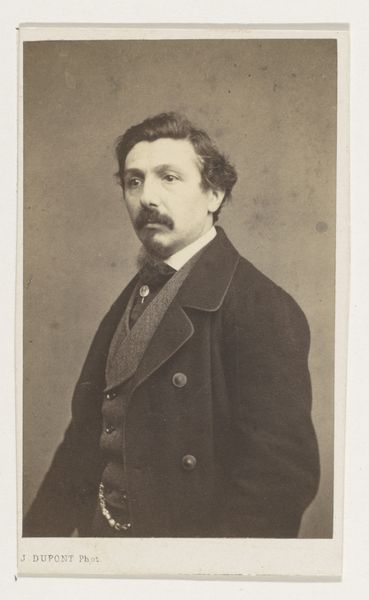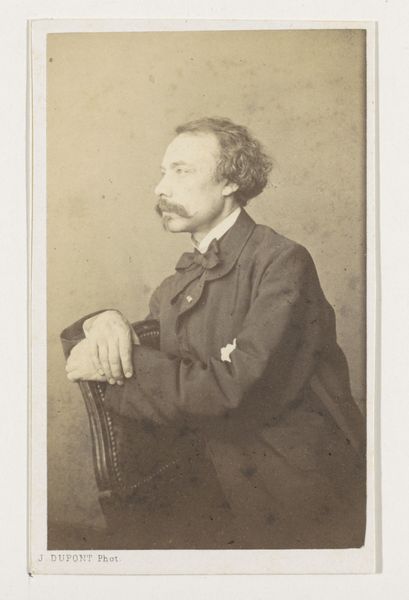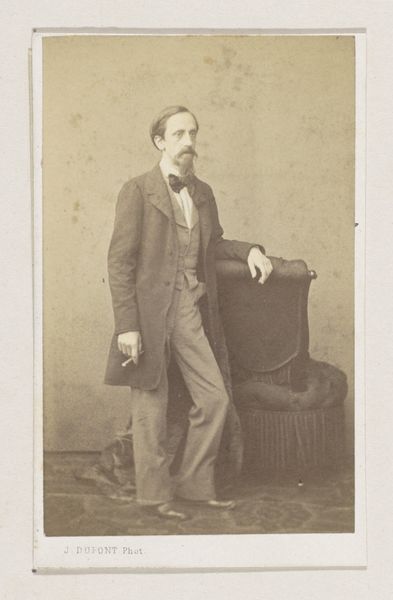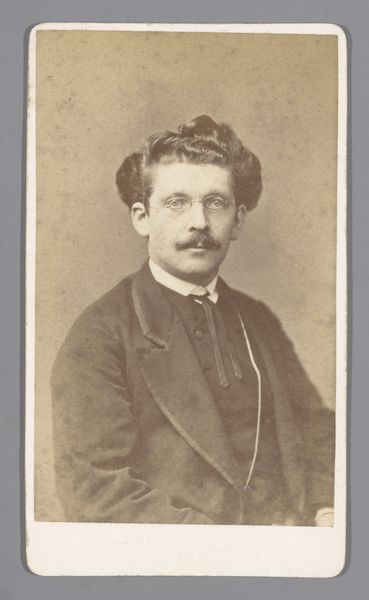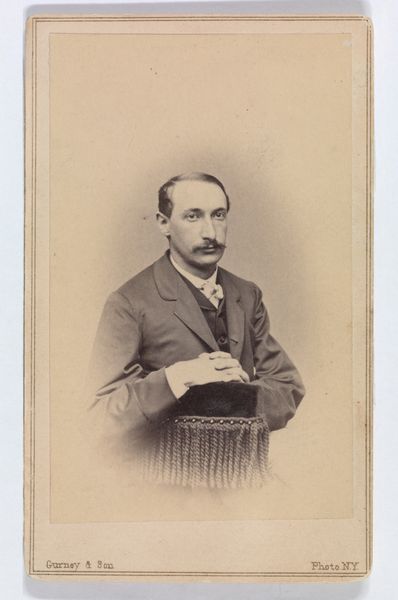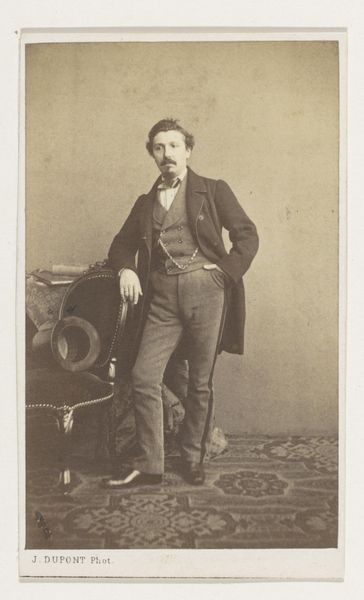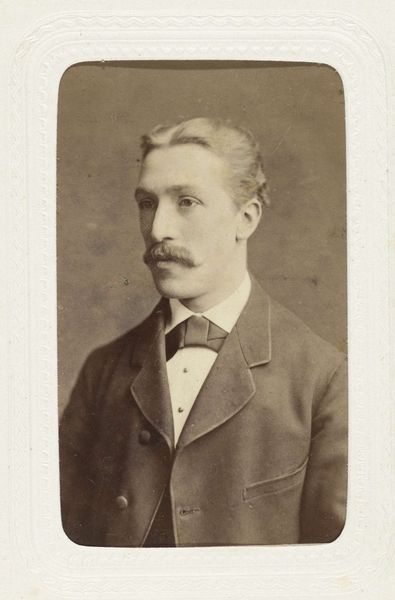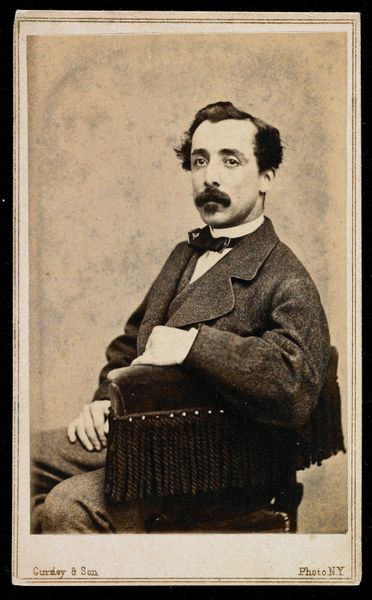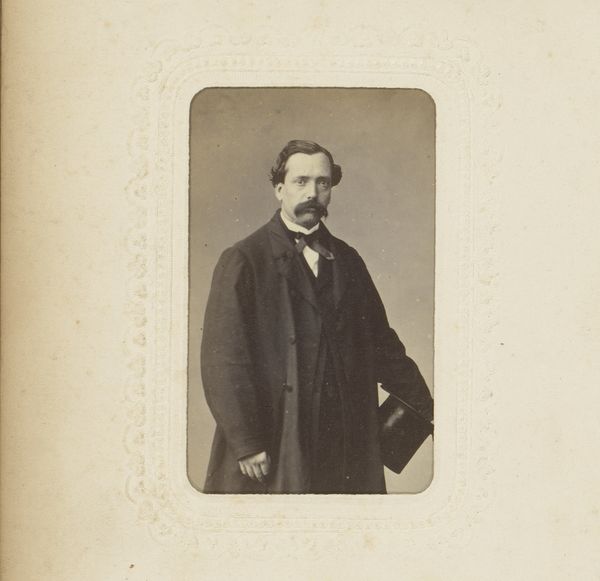
photography
#
portrait
#
photography
#
realism
Dimensions: height 105 mm, width 61 mm
Copyright: Rijks Museum: Open Domain
Editor: Here we have "Portrait of an Unknown Man" by Ferdinand Mulnier, dating from around 1867 to 1879. It’s a photograph, quite small, and the sepia tones give it such a strong feeling of the past. How do you interpret this work? Curator: The portrait embodies the tension inherent in early photography, oscillating between documentation and social aspiration. The sitter, well dressed, wants to be seen, yet remains 'unknown.' Doesn’t that suggest a critique of visibility, who gets remembered, and how easily identities can be lost or erased by dominant historical narratives? What do you notice about his gaze? Editor: He looks directly at the camera, but not confrontational. There is an almost pleading vulnerability in his eyes, and it suggests perhaps that photography democratized portraiture to a certain extent. Curator: Exactly! Photography allowed people outside the aristocracy to construct and project a certain image of themselves, reflecting upward social mobility and bourgeois values. It’s about self-fashioning. Yet, the limited tonal range and staged setting highlight photography's artificial nature even as it attempts to capture reality. Consider what choices he is making in his style to convey certain aspirational values in his photographic representation. Editor: That’s such an interesting perspective! I’d initially focused on the individual, but seeing it as part of a broader social movement makes it much richer. Curator: Indeed. Looking closely, we can begin to read the politics of representation at play in this "simple" portrait. Thank you, that was enlightening!
Comments
No comments
Be the first to comment and join the conversation on the ultimate creative platform.
